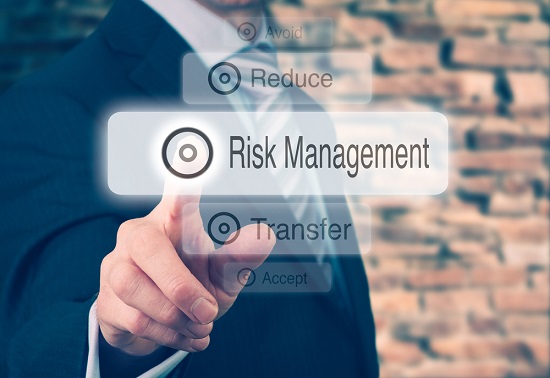
Understanding and managing the risks that your small business faces will increase your chances of success and long-term growth. The steps of risk management can be used to prepare your business for any eventuality. What's risk management?
What is risk management?
Risk management plan protects your business from operational, strategic, reputational, and internal risks.
Organizations can prepare for the unexpected by creating a plan to mitigate those risks and reduce extra costs. Not all risks are bad. According to the Small Business Administration, risks can also be caused by opportunities. Expansion and growth, for example, are great opportunities but can also present additional risks if they're not managed properly.
The ultimate goal of risk management is to minimize or prevent any negative effects on your business.
What is the importance of risk management?
Everyday life is full of risks. It is difficult to plan without taking into consideration the risks involved in every business activity.
According to the SBA, good risk management (PDF), has many benefits. Good cash flow leads stability which in turn leads to good credit which in turn leads to longevity.
The SBA also recommends
Risk management. It increases the likelihood of your business succeeding by helping you prepare for the unexpected.
Cash flow risk
Although there are many risks that can affect your business' financial health, this particular type of risk is focused on cash flow. Your liquid assets can be threatened by having too many customers or taking on too much debt.
Strategy risk
According to Harvard Business Review these are risks that a company takes on in order to earn greater returns. Every opportunity, no matter how lucrative, is fraught with risk. A risk management plan can help you determine whether or not the opportunity is worth taking.
Risk to reputation
A damaged reputation can lead to loss of brand loyalty, sponsors and suppliers, as well as employee morale. This type of risk is especially relevant for small businesses.
Hazard Risk
When talking about risk, the most common word is hazard. This includes common risks such as legal liability, property risk, and workers' compensation. Some examples include storm damage, building fires, employee illness, or injury.
Operational Risk
Anything that could affect internal, daily activity is an operational risk. Operations can be affected by technical problems, like a server failure; process issues, such as a lack of cash control among employees; or human error, such a mistaken data entry that causes a shortage.
Data Loss risk
Having your customer's data, financial data or sensitive company data compromised by cybercriminals or by a natural disaster such as a hurricane can be disastrous.
How do you identify potential risks
Identify the risk
Collect your team to brainstorm all possible risks, from equipment to customers. The SBA recommends that you invest in a business plan (PDF). This will help you identify any potential risks.
Analyze the Risks
Now, consider the effect each risk has on your business's operations, continuity, and future growth. To identify your strengths and weaknesses, as well as potential threats and opportunities, you could do a strengths, weakness, opportunities, and threats (SWOT), analysis with your team. You can now evaluate the likelihood and potential consequences for each risk on your list and rank them according to their severity so that you can decide which risks to address first.
Assess risk management options
Begin with the highest-ranking risks and decide whether to mitigate, transfer, or avoid them. As a customer-facing company, you cannot avoid the possibility of customers visiting your store. You can reduce the risk by controlling the flooring that you use to prevent slips and falls. You could transfer your driving risk to a food delivery company if you are a restaurant that makes deliveries. You could transfer your liability to an insurance company for certain risks.
Choose how to manage risk
Now, it's time for you to put your plan into practice. As an example, if you want to prevent customer slips and falls, your plan might be to call a flooring contractor on Thursday at 9 a.m. to select your flooring and schedule the installation date.
Review and monitor the risk
Schedule one or more check-ins to evaluate how your plan is going and make any necessary adjustments. If you have decided to eliminate your driving exposure, do you think the delivery company you selected is successful? Or should you try another service? Remember, don't stop at identify. To ensure that your business is prepared for any threat, it's crucial to outline your next steps and assign accountability. Then monitor and evaluate the risks.
Analyze your IT strategy
Now is the time for a Managed IT Services company such as SpartanTec, Inc. review your vulnerability to outside attack, your backup policies and do a thorough threat assessment.
Call SpartanTec, Inc. now if you want to know more about risk management and managed IT services.
SpartanTec, Inc.
Myrtle Beach, SC 29577
(843) 420-9760
https://www.spartantec.com/
Serving: Myrtle Beach, North Myrtle Beach, Columbia, Wilmington, Fayetteville, Florence
